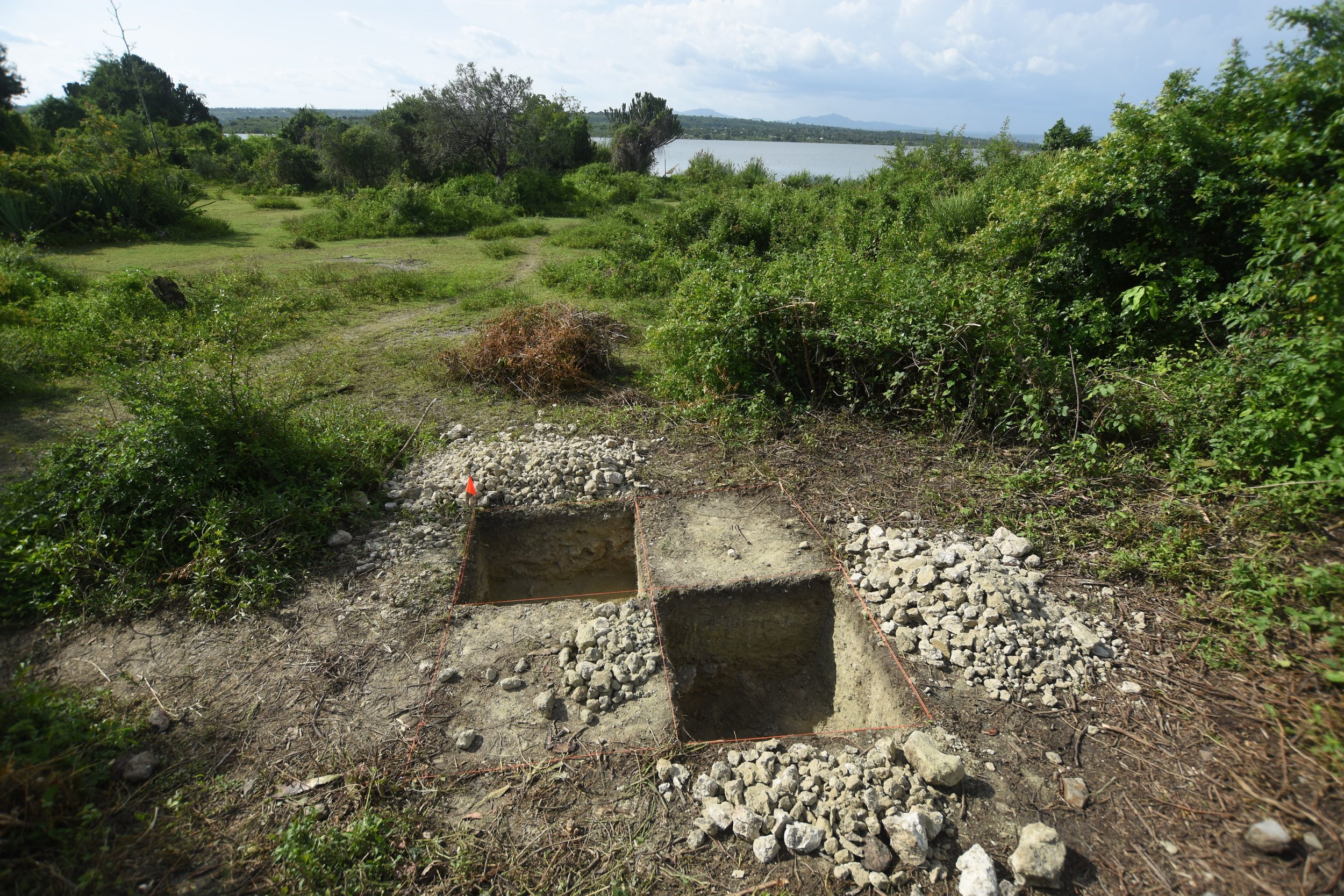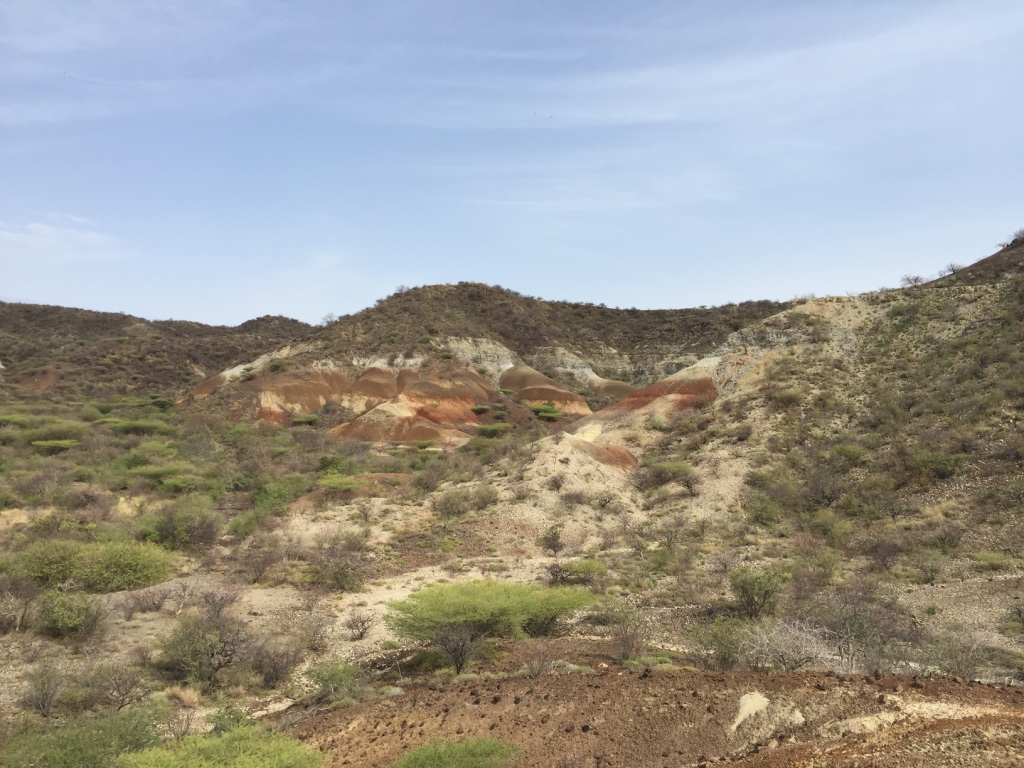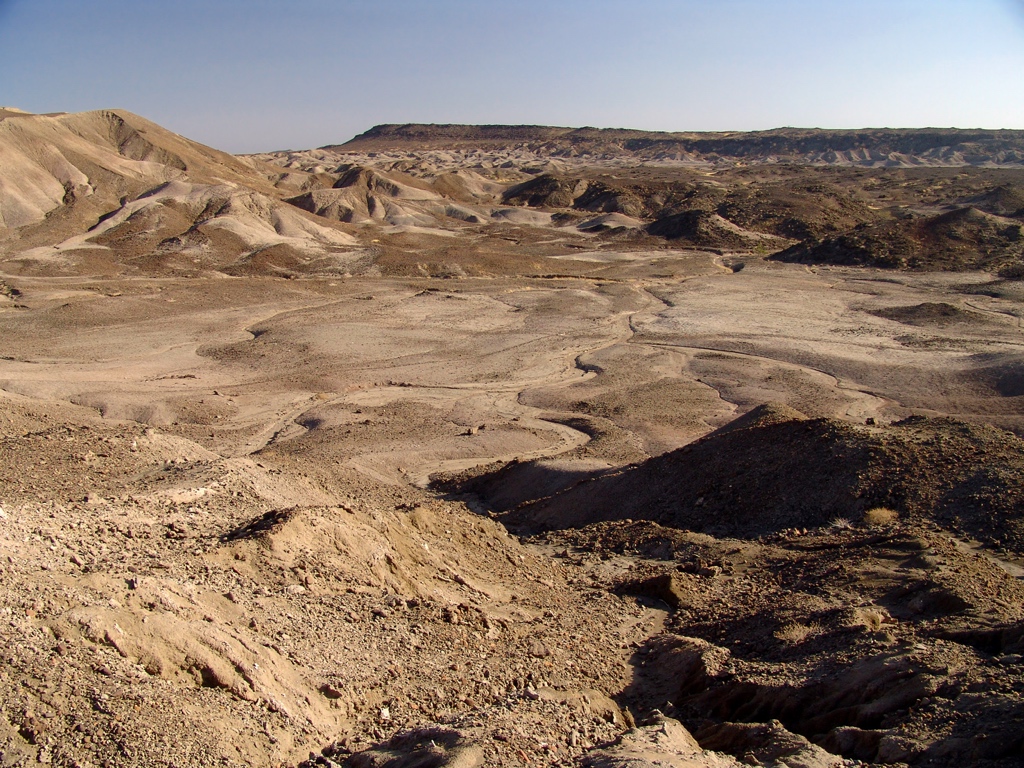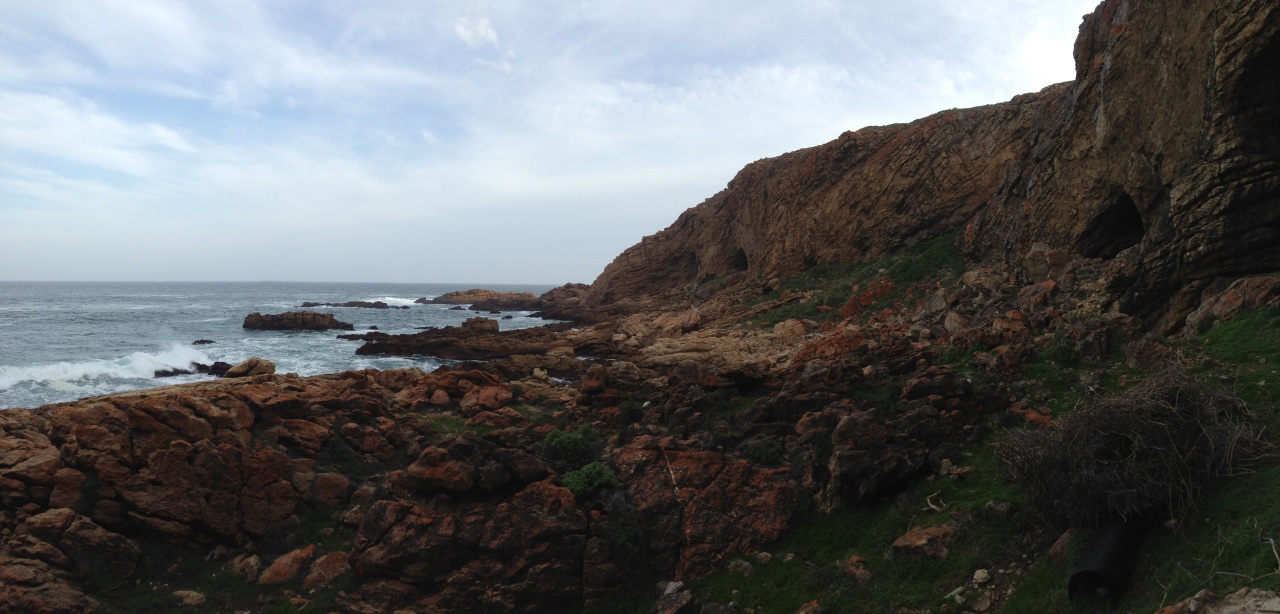Maboko Island - Winam Gulf, Kenya (Middle Miocene)
Maboko Island is located in the Winam Gulf of Lake Victoria and preserves middle Miocene sediments (~15 - 14 Ma) of the Maboko Formation, which also outcrops on the nearby mainland. Over 80 years of paleontological research on the island, most notably the decade-long extensive excavations undertaken by Dr. Brenda Benefit & Dr. Monte McCrossin, has yielded >10,000 fossils including a diverse primate fauna and a large collection of fossils of the early Old World monkey Victoriapithecus macinnesi (Benefit, 1999). I joined a Leakey Foundation-supported field season in 2022 to collect samples for refine geochronological and paleoecological analyses from the site. I currently coordinate the digitization of the Maboko faunal database.
Test pits at the Maboko Main locality (~15 - 14 Ma) on Maboko Island, facing Lake Victoria - photo by Ethan Hyland
Buluk - East Turkana, Kenya (Early Miocene)
Dead Elephant Valley (~17 Ma) at Buluk
Buluk is an early Miocene (~17 Ma) site located in remote northern Kenya, east of Lake Turkana. Sporadic work at the site since the mid 1970s has yielded a diverse primate fauna that includes early members of the ape and Old World monkey clades. Other fossil mammals from the site document the important transition from an archaic African fauna to a more modern fauna. With support from the Turkana Basin Institute, renewed long-term fieldwork began in 2013, led by Dr. Ellen Miller and Dr. Isaiah Nengo. I became a member of this project in 2016 and participated in the summer 2016 and 2018 field seasons. Currently, I am a collaborator in an updated analysis of the primates from Buluk.
Ledi-Geraru - Lower Awash Valley, Ethiopia (Late Pliocene)
The Ledi-Geraru Research Project (LGRP) is a Pliocene research project in the Lower Awash Valley of Ethiopia's Afar region led by Dr. Kaye Reed. With distinct fossil-bearing fault blocks spanning ~2.8 - 2.5 Ma, the LGRP area has yielded fossils from an underrepresented temporal window in the late Pliocene, including a partial mandible identified as the earliest representative of the genus Homo (Villmoare et al. 2015) and fossils indicating a new species of Australopithecus (Villmoare et al. 2025). Fossils from Ledi-Geraru have also provided new insight into faunal dynamics and paleoenvironments during this time (DiMaggio et al. 2015). I have been a member of this project since 2015, participated in the winter 2015 field season and have published on the fauna from this site.
Lee Adoyta Basin (2.67 Ma) in the LGRP area - photo by Eric Scott
Aycross Formation & Fantasia - Western Bighorn Basin, Wyoming (Middle Eocene)
Aycross Formation (~50 - 48 Ma) in Hot Springs County, Wyoming
Led by Dr. Ingrid Lundeen and Ben Rodwell, this project focuses on high elevation Eocene sites in the western Bighorn Basin of Wyoming. During the Eocene (56-33 million years ago), earth’s hotter climate fostered a tropical environment in Wyoming, hosting a variety of mammals adapted to the tropics including primates (Lundeen & Kirk, 2023). This fieldwork explores the mammal communities that lived at high elevation during the Eocene to better understand how mammals may have shifted their elevational ranges in response to climate change. I have assisted with annual field seasons at these sites since 2023.
Pinnacle Point - Mossel Bay, South Africa (Middle Stone Age)
The South African Coastal Palaeoclimate, Palaeoenvironment, Palaeoeclogy, and Palaeoanthropology (SACP4) Project, led by Dr. Curtis Marean, has been focused on the excavation of two caves (PP13B and PP5-6) that together constitute a sequence of Middle Stone Age human occupation spanning 160 - 50 ka. These sites document the earliest human coastal adaptations (Marean et al. 2007), as well as evidence of sophisticated controlled use of fire (Brown et al. 2009). I was a participant in the 2014 field season at PP5-6.
Pinnacle Point cave complex (Middle Stone Age)




